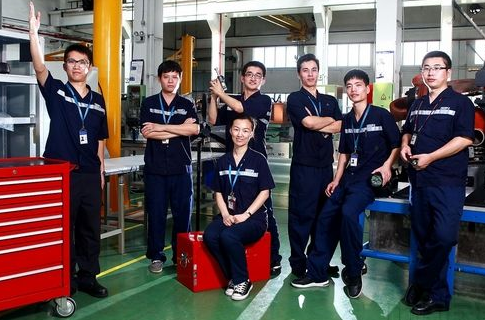This article aims to provide a detailed analysis of the working principle of air conditioning systems and unveils the truth behind their operations. The article is pided into multiple sections, starting with an introduction summarizing its content. It then explores four aspects of air conditioning working principles, each consisting of three or more paragraphs. Lastly, the article concludes by summarizing and summarizing the insights gained from understanding the workings of air conditioning systems.

Air conditioning is a widely used technology that enables us to maintain comfortable indoor temperatures regardless of the external climate. However, understanding how air conditioning systems function can enhance our appreciation for this modern convenience. In this article, we will delve into the four key aspects of air conditioning working principles to unveil the truth behind their operations.

The refrigeration cycle is the backbone of air conditioning systems. It consists of four main components: the evaporator, compressor, condenser, and expansion valve. The cycle starts when the refrigerant enters the evaporator as a low-pressure gas, absorbing heat from the surrounding air, and turning into a high-pressure gas in the compressor. The refrigerant then flows into the condenser, releasing heat and transforming back into a low-pressure liquid. After passing through the expansion valve, it returns to the evaporator to repeat the cycle. This continuous process removes heat from the indoor environment, allowing us to achieve a cooler temperature.

The refrigeration cycle is a continuous and efficient process that relies on the extraction and dissipation of heat to maintain a comfortable indoor climate. By understanding this principle, we can appreciate the complexity and importance of the various components involved in air conditioning systems.

Heat transfer plays a crucial role in the functioning of air conditioning systems. There are three main methods of heat transfer involved: conduction, convection, and radiation.

Conduction occurs when heat transfers through direct contact between two objects. In an air conditioning system, this can be observed when the refrigerant absorbs heat from the indoor air through the evaporator's metal fins.

Convection refers to the transfer of heat through the movement of fluids or gases. In an air conditioning system, air is passed over the chilled evaporator coils, absorbing heat and cooling the surrounding environment.

Radiation involves the emission of electromagnetic waves that carry heat. While radiation is not the primary heat transfer method in air conditioning systems, it plays a minor role when heat is emitted from the condenser coils into the atmosphere.

By comprehending the different heat transfer mechanisms, we can better understand how air conditioning systems effectively remove heat from indoor spaces, creating a comfortable and controlled environment.

Besides temperature regulation, air conditioning systems also aid in humidity control. The cooling process within an air conditioner removes moisture from the air, effectively reducing humidity levels. When warm air passes over the evaporator coils, the moisture condenses and collects in a drain pan, eliminating excess moisture and preventing the growth of mold and mildew.

Humidity control is essential for both comfort and health. Air conditioning systems that can efficiently regulate humidity create a more pleasant indoor environment, preventing excessive moisture accumulation and the associated health risks.

Energy efficiency is a significant aspect of air conditioning systems. Advances in technology have led to the development of energy-efficient air conditioning units, helping reduce electricity consumption and environmental impact.

Improving energy efficiency involves several factors. Proper sizing and installation of air conditioning units are critical to optimal operation. Regular maintenance, such as cleaning or replacing filters, ensures that the system operates at peak efficiency. Additionally, programming the thermostat to adjust temperatures when people are not present can further reduce energy consumption.

Understanding the relationship between energy efficiency and air conditioning systems allows us to make informed decisions when selecting and operating these units, minimizing both our ecological footprint and energy costs.

In conclusion, air conditioning systems rely on the refrigeration cycle, heat transfer mechanisms, humidity control, and energy efficiency to maintain comfortable indoor environments. By comprehending these working principles, we gain a deeper understanding of how air conditioning systems create and sustain a pleasant atmosphere. Whether it is the removal of heat, control of humidity levels, or minimizing energy consumption, each component contributes to the overall functioning of air conditioning systems. Knowing the truth behind their operations enables us to make informed decisions and appreciate the technology that keeps us comfortable year-round.
标题:YORK厂家全国统一服务热线(约克空调的工作原里是什么意思约克空调工作原理解析:清晰揭秘约克空调真相)
地址:http://www.hmhjcl.com/bigualu/314497.html

